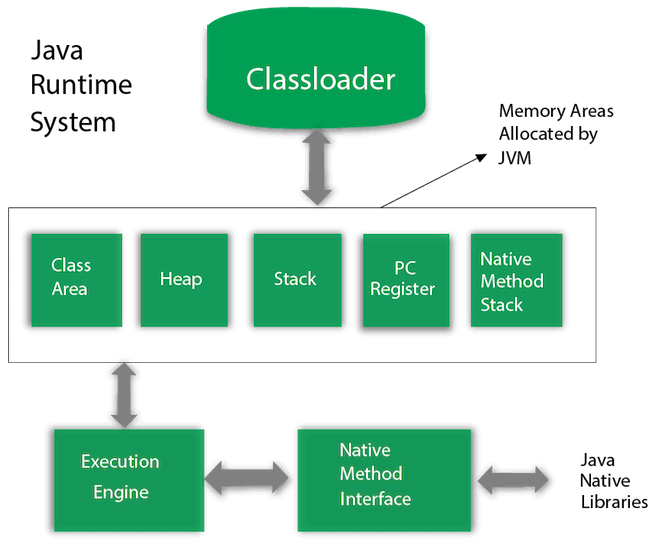What is JVM? How JVM Works – JVM Architecture?
JVM (Java Virtual Machine)
JVM(Java Virtual Machine) acts as a run-time engine to run Java applications. JVM is the one that actually calls the main method present in a java code. JVM is a part of JRE(Java Runtime Environment).
Java applications are called WORA (Write Once Run Anywhere). This means a programmer an develop Java code on one system and can expect it to run on any other ava enabled system without any adjustment. This is all possible because of JVM.
When we compile a .java file, .class files(contains byte-code) with the same class names resent in .java file are generated by the Java compiler. This .class file goes into various steps when we run it. These steps together describe the whole JVM.
What it does
The JVM performs following operation:
- Loads code
- Verifies code
- Executes code
- Provides run time environment
JVM provides definitions for the:
- Memory area
- Class file format
- Register set
- Garbage-collected heap
- Fatal error reporting etc.
JVM Architecture
Let's understand the internal architecture of JVM. It contains class loader, memory area, execution engine etc.

Classloader
Classloader is a subsystem of JVM which is used to load class files. Whenever we run the java program, it is loaded first by the classloader. There are three built-in classloaders in Java.
- Bootstrap ClassLoader: This is the first classloader which is the super class of Extension classloader. It loads the rt.jar file which contains all class files of Java Standard Edition like java.lang package classes, java.net package classes, java.util package classes, java.io package classes, java.sql package classes etc.
- Extension ClassLoader: This is the child classloader of Bootstrap and parent classloader of System classloader. It loades the jar files located inside $JAVA_HOME/jre/lib/ext directory.
- System/Application ClassLoader: This is the child classloader of Extension classloader. It loads the classfiles from classpath. By default, classpath is set to current directory. You can change the classpath using "-cp" or "-classpath" switch. It is also known as Application classloader.
Class(Method) Area
Class(Method) Area stores per-class structures such as the runtime constant pool, field and method data, the code for methods.
Heap
It is the runtime data area in which objects are allocated.
Stack
- Java Stack stores frames. It holds local variables and partial results, and plays a part in method invocation and return.
- Each thread has a private JVM stack, created at the same time as thread.
- A new frame is created each time a method is invoked. A frame is destroyed when its method invocation completes.
Program Counter Register
PC (program counter) register contains the address of the Java virtual machine instruction currently being executed.
Native Method Stack
It contains all the native methods used in the application.
Execution Engine
It contains:
- A virtual processor
- Interpreter: Read bytecode stream then execute the instructions.
- Just-In-Time(JIT) compiler: It is used to improve the performance. JIT compiles parts of the byte code that have similar functionality at the same time, and hence reduces the amount of time needed for compilation. Here, the term "compiler" refers to a translator from the instruction set of a Java virtual machine (JVM) to the instruction set of a specific CPU.
Java Native Interface
Java Native Interface (JNI) is a framework which provides an interface to communicate with another application written in another language like C, C++, Assembly etc. Java uses JNI framework to send output to the Console or interact with OS libraries.

Comments
Post a Comment